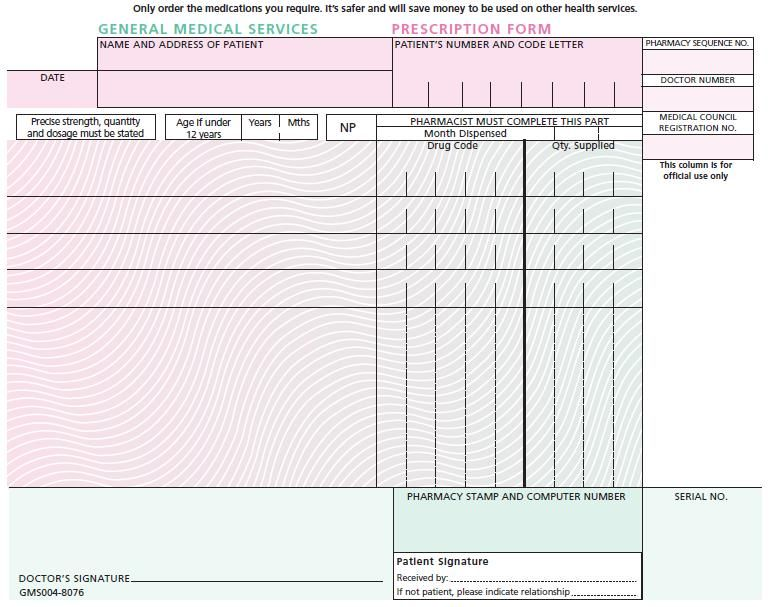Primary care reimbursement is a critical issue facing the U.S. healthcare system, as it directly influences the quality and accessibility of health services for patients. With the rising demand for appointments coupled with a shortage of physicians, innovative payment models like ACO PC Flex aim to reshape how primary care is funded. This experiment, rooted in provisions from the Affordable Care Act, is designed to enhance primary care funding, allowing physicians to focus on preventive care rather than merely addressing acute issues. By incentivizing healthcare providers to prioritize holistic patient health, the initiative seeks to alleviate some of the pressure on our strained healthcare system. Ultimately, successful implementation of this model could lead to improved Medicare reimbursement strategies and better health outcomes nationwide.
In the realm of healthcare financing, issues surrounding primary care compensation have come to the forefront as a significant concern for both providers and patients alike. The recent surge in focus on primary care payment frameworks underscores the necessity for reform that adequately supports healthcare professionals in delivering essential services. As innovative approaches like ACO PC Flex emerge to facilitate upstream preventive care and sustainability, it raises questions about how these systems can effectively replace traditional methods of reimbursement. Enhanced fiscal strategies across the board, including Medicare reimbursement adjustments, could catalyze change in how primary care is perceived and funded. With a shift towards prioritizing preventive measures, these new models have the potential to revolutionize healthcare funding for primary care.
The Current Crisis in U.S. Primary Care
U.S. primary care faces a significant crisis characterized by an imbalance in demand and supply. As the number of patients seeking appointments continues to rise, the shortage of primary care physicians exacerbates the issue. This rising tide of demand is complicated by the prevalence of corporate ownership in primary care practices, leading to increasing pressure on clinicians to see more patients within shorter timeframes. As a result, the focus on quality patient care diminishes, impacting the effectiveness of preventive measures that primary care is tasked with managing.
The low reimbursement rates for primary care in relation to specialty care contribute to this crisis. Organizations favor procedures performed by specialists, such as surgeries conducted by ophthalmologists or dermatologists, thereby undervaluing the essential services offered by primary care doctors. This misalignment in reimbursement not only undermines the practice of preventive care but also discourages new doctors from entering primary care, further intensifying the struggle for adequate access to healthcare.
Understanding ACO PC Flex: A New Payment Model
The ACO PC Flex program represents a forward-thinking approach to primary care reimbursement. Built under the framework of the Affordable Care Act, this initiative aims to shift from the traditional fee-for-service model to a prospective payment system. This means that healthcare providers receive a set payment before any services are rendered, enabling them to invest in preventive care initiatives rather than solely focusing on visiting volume. This innovative structure aims to empower primary care doctors to foster healthier patient outcomes and reduce hospital visits.
By creating financial incentives focused on the quality of care rather than the quantity of services, ACO PC Flex seeks a balance in the reimbursement landscape. The program encourages primary care practices to enhance their capabilities, allowing them to provide more comprehensive preventive care. As such, there’s an opportunity for healthcare providers to engage in holistic treatment plans that focus on overall patient wellness, and not just reactive care in clinical settings.
The Shift Towards Preventive Care
Preventive care is critical to improving overall health outcomes and lowering healthcare costs. With programs like ACO PC Flex emphasizing upfront payments for primary care, there is a clear incentive for physicians to prioritize preventive measures. This shift helps address chronic diseases early on, reducing the need for more invasive and expensive treatments later. For instance, routine screenings and patient education can lead to healthier lifestyle choices, ultimately decreasing hospitalization rates and long-term medical expenses.
In this shifting landscape, it’s crucial for providers to adopt models that support preventive care, particularly in underserved communities. As primary care models evolve, integrating preventive care into primary care practices can foster healthier populations. Additionally, this may align with broader healthcare reforms, ensuring a wider adoption of similar practices across other funding models in the healthcare system.
The Role of Medicare Reimbursement in Healthcare Innovation
Medicare reimbursement plays a vital role in shaping strategies for healthcare innovation, particularly in primary care. The ACO PC Flex model, centered on prospective payments, could inspire other funding structures throughout the healthcare system. By demonstrating the effectiveness of investing in preventative frameworks, the program serves as a blueprint for what enhanced reimbursement may look like for other patient populations, including those on Medicaid and commercially insured patients.
Moreover, if successful, ACO PC Flex has the potential to influence the broader healthcare market. Commercial insurers might adopt similar approaches, driven by demonstrated savings in overall care costs and improved patient outcomes. The ripple effect of effective Medicare reimbursement can promote an environment where preventive care flourishes, bridging the funding gaps seen in various healthcare sectors.
Challenges in Implementing New Primary Care Payment Models
The transition to innovative primary care payment models like ACO PC Flex is not without challenges. One major hurdle is the need for healthcare providers to adapt to new frameworks that prioritize patient outcomes over service volume. Many physicians are accustomed to traditional fee-for-service models, thus requiring substantial organizational changes to integrated prospective payment structures effectively. Training, support, and the development of new skilled practices are critical to ensuring that healthcare providers can navigate this transition successfully.
Additionally, differing state regulations, especially within Medicaid frameworks, pose barriers to universal acceptance of these models. Disparate reimbursement rates and funding allocations can hinder the ability of new programs to deliver comprehensive patient care consistently. Collaboration between private insurers, Medicaid programs, and Medicare can help create a cohesive strategy that encourages a wider adoption of innovative primary care reimbursement models.
Future Impacts of ACO PC Flex on Primary Care Funding
The implementation of the ACO PC Flex program raises essential questions about the future funding landscape of primary care. If successful, this model could reshape the perception and economic operation of primary care practices, enabling them to receive funding that reflects their crucial role in the healthcare ecosystem. By demonstrating that effectively funded primary care can lead to reduced hospital admissions and overall healthcare savings, ACO PC Flex may influence the models used for healthcare funding in both Medicaid and commercial insurance sectors.
As the program progresses, policymakers will closely monitor its impact on patient care levels and healthcare spending, ensuring that successful elements can be replicated across other states and insurance models. If ACO PC Flex proves to deliver on its promises, it could inspire a host of revisions in reimbursement policies, ultimately leading to stronger, more sustainable primary care systems that fully embrace preventive care.
Engaging Stakeholders in Primary Care Reforms
The success of innovations in primary care reimbursement, such as ACO PC Flex, hinges on robust stakeholder engagement. This involves not just healthcare providers, but also patients, policymakers, insurers, and community organizations. Active collaboration among these groups can ensure that the diverse needs of populations are addressed and that reforms are designed to be inclusive and effective. When patients feel empowered and engaged in their healthcare decisions, they are more likely to participate actively in preventive care activities.
Furthermore, accountability mechanisms facilitating constant feedback from all stakeholders will be paramount in refining the ACO PC Flex model. Engaging with community representatives, especially from underserved populations, can highlight specific needs and barriers that may arise during implementation. As primary care reimbursement models evolve, ongoing discourse and feedback loops will be essential to creating a responsive and effective healthcare ecosystem.
The Importance of Data in Healthcare Decision Making
Data plays a critical role in modern healthcare decision-making, particularly in assessing the effectiveness of payment models like ACO PC Flex. Utilizing robust data analytics can help identify which primary care strategies yield the best outcomes for patients and which areas require improvement. As healthcare providers move toward prospective payment models, it becomes imperative to collect and analyze comprehensive data that demonstrates the impact of preventive care on the overall cost of healthcare.
Integrating data into every facet of primary care planning facilitates targeted interventions that are data-driven and evidence-based. By utilizing data archives, healthcare organizations can track patient outcomes and financial performance, thereby fostering a culture of continuous improvement in care delivery. Ultimately, effective data usage not only informs internal decisions but also aids in advocating for further funding and support for primary care initiatives.
Policy Recommendations for Strengthening Primary Care
To effectively strengthen primary care within the healthcare system, a multifaceted approach to policy recommendations is necessary. Firstly, increasing funding for primary care initiatives, especially for those serving low-income populations, will be crucial in addressing disparities faced by many patients. Streamlining reimbursement rates to ensure equitable pay across specialties can help retain physicians in primary care fields and support the provision of essential services.
Furthermore, policies promoting educational programs for healthcare professionals, designed to enhance the delivery of preventive care, should be prioritized. Immediate action on aligning incentives across all healthcare models can create a more integrated environment focused on patient-centered care. By establishing policies that drive funds towards innovation, preventive resources, and comprehensive training programs, the healthcare system can better prepare to meet the demands and expectations of future generations.
Frequently Asked Questions
What is primary care reimbursement and why is it important?
Primary care reimbursement refers to the payment models used to compensate healthcare providers for primary care services. It’s crucial because it directly affects the accessibility and quality of primary care. Adequate reimbursement ensures that primary care providers can sustainably offer preventive care and manage patient health, ultimately reducing healthcare costs.
How does the ACO PC Flex model impact primary care reimbursement?
The ACO PC Flex model introduces a prospective payment system, where primary care practices receive payments prior to delivering services. This aims to increase primary care reimbursement, encouraging providers to focus more on preventive care and patient wellness, rather than a volume-driven model that emphasizes fee-for-service payments.
What challenges do primary care reimbursement models face today?
Challenges in primary care reimbursement models include low payment rates compared to specialists, high patient volumes leading to clinician burnout, and existing fee-for-service models that discourage investment in preventive care. These factors hinder the effective delivery of primary care services.
In what ways does the ACO model improve primary care funding?
The ACO model improves primary care funding by allowing for shared savings incentives, which reward providers for keeping healthcare costs under control. ACO PC Flex specifically enhances funding by using prospective payments, helping practices invest in patient outreach and preventive care initiatives.
What role does preventive care play in primary care reimbursement?
Preventive care is a vital component of primary care reimbursement as it focuses on avoiding serious health issues before they arise. Enhanced funding and reimbursement models, like ACO PC Flex, incentivize healthcare providers to prioritize preventive measures, which can lead to healthier patient outcomes and lower overall healthcare costs.
How does Medicare reimbursement relate to primary care payment models?
Medicare reimbursement directly influences primary care payment models by setting guidelines for payment rates and structures. The implementation of new models, such as ACO PC Flex, aims to address disparities in reimbursement, securing better funding for primary care services within the Medicare framework.
What are the benefits of prospective payment in primary care reimbursement?
Prospective payment offers a significant benefit in primary care reimbursement by providing upfront funding to healthcare providers before services are rendered. This approach allows practices to allocate resources to improve patient care and emphasize preventive services, enhancing overall healthcare efficiency.
| Key Point | Details |
|---|---|
| Current Problems in Primary Care | Rising demand for services, physician shortages, low reimbursement compared to specialists. |
| Introduction of ACO PC Flex | A five-year initiative aimed at increasing primary care spending and incentivizing preventive care. |
| Prospective Payment Model | Payments are made upfront based on county averages instead of after service delivery. |
| Shared Savings Model | Incentivizes doctors to reduce hospitalization costs, with potential savings shared between providers and the government. |
| Barriers to Better Compensation | Specialty societies hold power in Congress, limiting increases for primary care. |
| Potential for Broader Impact | Success in Medicare could influence Medicaid and commercial insurance reimbursement models. |
Summary
Primary care reimbursement has long been a contentious issue within the U.S. healthcare system. The introduction of the ACO PC Flex initiative promises to address some of these long-standing challenges by enhancing payment frameworks that prioritize preventive care and better support primary care providers. By focusing on a prospective payment model, the new framework encourages doctors to engage in more in-depth patient care rather than just transactional visits. This innovative approach holds the potential not only to stabilize the primary care sector but also to improve overall health outcomes by keeping patients out of high-cost hospital settings. As the program unfolds, its success could serve as a transformative model for future primary care reimbursement strategies across Medicare, Medicaid, and potentially the commercial insurance landscape.




